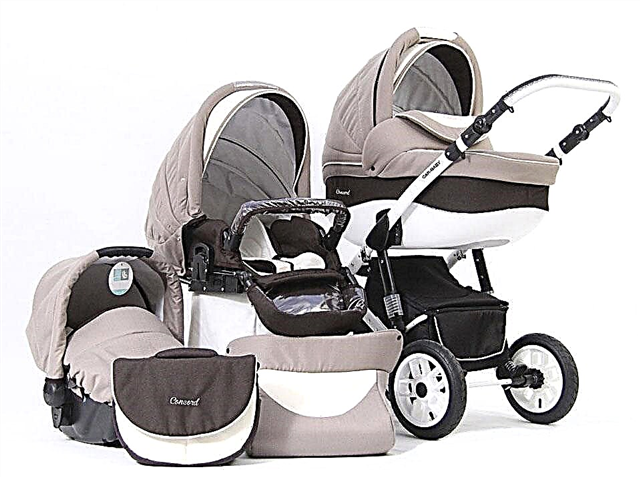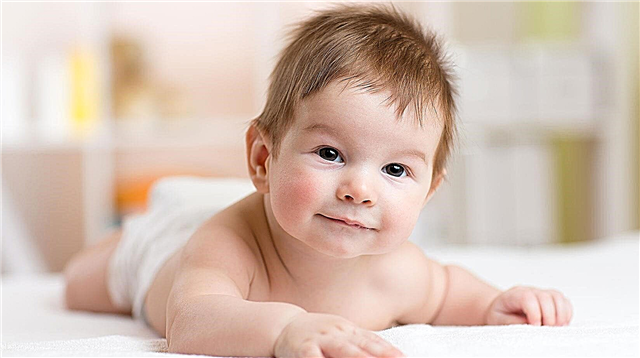Small children often suffer from respiratory diseases, which are accompanied by a runny nose. Due to the narrowness of the nasal passages, the child's nozzles do not immediately pass. The protracted process worries mothers and not without reason - after rhinitis, there can be serious complications.

Nozzles at the crumbs
What is a runny nose
The nostrils are necessary to breathe and smell smells, and they also have a protective function. On the inner walls of the cavities, filamentous cells called cilia grow. When the baby breathes, these villi vibrate back and forth, thus keeping the passageways clean.
In order for the cilia to work actively, a special lubricant is needed. It is provided by glands located in the inner lining of the nose. During the day, enough fluid is produced to keep the cavities moist.
Under the influence of a number of factors, the mucous membrane can dry out, become glue-like, viscous. This makes it difficult for the cilia to move and allows inhaled viruses to latch onto them. Under the weight of microorganisms, the bristles stop vibrating completely.
If, in a normal state, part of the secretion secreted by the glands drained into the throat and oral cavity in order to lubricate the mucous membranes there, then in the "stationary position" all the fluid accumulates in the back of the nose and lays it down. Abundant formations are called a runny nose.
Types of infant rhinitis
In a small child under one year old, the nasal passages are very short, so the secretion accumulates quickly. In addition, nerve endings are located inside that connect the cavity zones with systems and internal organs. The slightest irritant leads to a malfunction of the physiological functions of the respiratory tract.
This is manifested by various symptoms that allow rhinitis to be classified into types. Most often, babies are diagnosed with an infectious rhinitis. It can be either an independent disease caused by bacteria or viruses, or be one of the signs of another disease (ARVI, influenza, scarlet fever, measles, etc.).
There is another type of rhinitis that is not caused by pathogens.
Non-infectious rhinitis
| View | Features: |
|---|---|
| Allergic | The reaction of the nasal mucosa to one of the irritants: dust, animal hair, pollen, etc. Typical signs of this type of rhinitis: • frequent sneezing; • labored breathing; • transparent "water", abundantly allocated from the nose. |
| Vasomotor | Inflammation of the mucous membrane is caused by a violation of the nervous regulation of vascular tone. In this case, irritating odors and stress are considered the "culprits". A distinctive feature of rhinitis is the periodic congestion of one or the other of the sinuses. |
| Foreign | Children sometimes get third-party objects (beads, balls, pen caps) into the nasal cavity. They act as irritants of nerve receptors, thereby provoking an abundant accumulation of fluid. |

Snot stream
Note! Whatever the reason why the child does not get a runny nose, the accumulation of snot occurs in stages.
Stages of development of the common cold:
- The reflex stage - develops with lightning speed and lasts several hours. There is a vasoconstriction, which is why the mucous membrane turns pale. There is dryness in the nose, provoking itching and burning, which become the cause of sneezing. At the same time, the temperature remains normal or slightly rises.
- The catarrhal act stretches for two to three days. Now the opposite process is observed - vasodilation, which leads to edema of the shells and redness of the mucous membrane. The sinuses fill with a watery fluid that starts flowing from the nose. This makes breathing difficult and causes problems such as:
- tearing;
- ear congestion;
- decreased sense of smell;
- lack of appetite.
Against the background of all this, a nasal tone appears in the voice.
- The bacterial stage - the second cycle of the disease begins, in which microorganisms of 2 types complement each other, and the inflammation continues to grow, turning into a purulent form. This is evidenced by the shade of the discharge: yellowish or green. The consistency of the snot also changes - they become thicker.
If the baby is treated, then the entire cycle will take no more than 7 days in time. As a result, the baby's general condition will improve, his sense of smell and breathing will be restored, the mucous membrane will acquire a familiar shade.
When rhinitis is not based on infection, the stages described may be less pronounced or completely absent. In this case, recovery is possible in 2-3 days - it is enough to save the baby from an external stimulus.

Lingering rhinitis
Note! If viruses and bacteria are involved in the process, and the immune system in the crumbs is weak, then a child's runny nose can last for more than a month, turning into a chronic form.
Possible causes of prolonged rhinitis
Having studied the types of rhinitis, it becomes clear what provokes its occurrence. You should also know what prevents him from passing in a few days and allows him to stretch for weeks. Among the causes of protracted rhinitis are the following:
- ENT diseases (tonsillitis, sinusitis, adenoids, polyps);
- pathology of the nasal cavity (curvature of the septum, trauma, congenital diseases, foreign bodies, etc.);
- long-term use of vasoconstrictor nasal drops (they just stop helping).
In addition to physiological reasons, the protective properties of the mucous membrane can be reduced by external factors: dry indoor air or polluted with smoke or dust. Abrupt changes in ambient temperature, as well as hypothermia and overheating of the child, have an effect.
Which doctor to contact
To cure the baby from a cold or other infection, mother, first of all, goes to see the local pediatrician. If a child's runny nose does not go away for a long time, the baby should be shown to the ENT doctor. The specialist will help identify pathologies that interfere with recovery, and, if necessary, will prescribe additional treatment.
You may have to visit an infectious disease specialist who will determine the nature of the disease. Indeed, in the fight against viruses, some drugs are needed, against bacteria, others are required.

At the doctor
If the problem is not related to infection, an allergist can help find the main irritant. It is enough to eliminate the cause of such rhinitis, and the disease will quickly subside.
Why is self-medication dangerous?
Some mothers do not consider a runny nose a serious problem and are confident that the child is able to survive without the participation of doctors. Therefore, they prefer to treat the little one with home remedies. You cannot do this (even knowing how and how much to drip) - the juice of onions, geraniums, beets, carrots, etc. can burn the mucous membrane of the toddler, thereby increasing the inflammatory process.
Important! Essential oils used in the treatment of babies cause a strong allergic reaction, making it even more difficult for the little one to breathe.
There is an opinion among the people that breast milk is a good antiseptic, so it should be buried in a baby's nose. Such a statement can be called fake - breast fluid is an excellent breeding ground for bacteria and does not bring any benefit in this case.

False statement
Even medications are unable to cure a baby if they are incorrectly selected. Nasal drops should be prescribed only by a doctor, taking into account the cause, type and degree of developed rhinitis.
A therapy that has passed without medical supervision may result in the development of otitis media, sinusitis and other serious diseases.
Doctor Komarovsky about the common cold in infants
Doctor Komarovsky, popular among mothers, in his programs touches on many interesting topics related to the health of babies. The pediatrician also paid attention to the runny nose, giving a lot of useful advice.

The authority of Russian mothers
Evgeny Olegovich believes that the basis of a lingering rhinitis in a child is primarily to blame for the behavioral mood of the parents. Before the baby has time to stuff its nose, the mother either grabs the drops or uses folk recipes.
In fact, the main motto in the fight against a cold is: "Don't let the snot dry out!" While the light "water" flows from the sinuses, there is nothing to worry about. A difficult situation occurs when the discharge thickens and lingers in the nose. It is even worse if the mucous membrane becomes covered with a dry crust.
Note! Komarovsky suggests: before applying any remedies for the common cold, adjust the temperature and humidity conditions in the room.
You should also not immediately resort to vasoconstrictor drops, giving the immune system a chance to deal with the situation on its own. Nasal preparations are recommended in such cases:
- when the crumbs have a stuffy nose, and all the time he has to breathe through his mouth (which leads to the drying of the laryngeal mucosa and provokes a cough in the baby);
- if the sinuses are not blocked, but the inner walls are covered with a crust, preventing the receptors from functioning normally;
- in a situation where the baby's temperature has risen above 38.5 ° (in addition to antipyretic);
- with suspected otitis media, sinusitis, sinusitis.
In all other cases, what the mother should do is periodically rinse the baby's sinuses with a weak solution of salt (1 tsp per 1 liter of warm boiled water).
If a child's runny nose does not go away for a week or more, antibiotics should not be used, especially local exposure. Such drugs should be prescribed exclusively by a doctor. In addition, not every runny nose can be eliminated with these medicines - they are used when a bacterial infection is diagnosed.
Prevention measures
To avoid a lingering rhinitis, it is easier to avoid it. So that the mucous membranes of the nose do not become inflamed and even less dry out, a favorable microclimate is created in the child's room. Regardless of whether the little one is sick or not, it is recommended to periodically rinse the sinuses with sea water or saline, and also use a nozzle pump.



